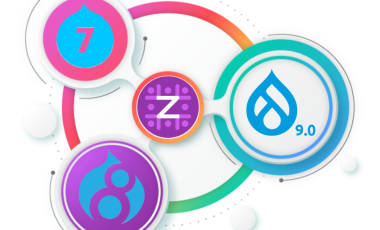Enhancing Quality and Speed: LUXVT Cuts Regression Testing Time by 75%with Test Automation
Introduction
LUXVT is a pioneering digital enablement platform catering to the luxury real estate market in the USA and Canada. A significant challenge for LUXVT involved its tour creation feature, which required extensive manual regression testing for each platform update to ensure functionality. This manual testing process was time-consuming, costly, prone to delays, slowed down the development cycle, and hindered the efficient release of new features. This case study highlights how automating the testing of this tour creation process aimed to reduce the required regression testing effort from the platform engineering team, enhance the overall efficiency and quality of the platform, and ultimately enable faster, more reliable development cycles.
Challenges
- Manual Test Execution: Testers were heavily reliant on manual execution of test cases, which was time-consuming and prone to human error.
- Regression Testing Bottlenecks: Each regression cycle was lengthy, requiring significant effort to run the tests and verify results across multiple versions.
- Limited Test Coverage: Due to the time constraints, only the most critical paths could be tested frequently.
- Delayed Defect Detection: Defects were often detected later in the development cycle, making it harder and more costly to resolve them.
Our Approach
Our team adopted a structured methodology to deliver the automation project effectively. We initiated the process with comprehensive requirements gathering and analysis to fully understand the specific needs for testing the LUXVT tour creation feature. Following this foundational step, we moved to the design and development of a tailored automation testing framework, utilizing Selenium Java.
A key element was the implementation of a data-driven testing framework. This framework employed TestNG, the Page Object Model (POM), and parameterization using Excel to manage and feed test data into the automated scripts, with Maven handling project management. To ensure thorough validation of different scenarios, such as login credentials and tour creation form inputs, we utilized a variety of data types stored in the Excel sheets. Specifically addressing the types of data used:

Valid Data: Correctly formatted data expected to pass validation and result in successful operations.
Invalid Data: Incorrectly formatted or inappropriate data expected to trigger error messages or rejection.
Boundary Values: Data representing the limits or edges of acceptable input ranges.
Using this mix of valid, invalid, and boundary test data allowed us to verify positive paths, error handling, and edge case stability within the tour creation feature.
Subsequently, our focus shifted to test case creation and execution, running the automated scripts against the application using the data defined above. We established rigorous processes for defect reporting and tracking to manage any issues identified. To ensure continuous quality and feedback, continuous integration and testing were integrated into the workflow.
Result
The implementation of the automated testing solution brought about substantial and measurable improvements to the testing process for LUXVT’s tour creation feature, directly addressing the challenges posed by manual testing.
Transformation from Manual Bottlenecks
Previously, the reliance on manual testing created significant hurdles. Regression test cycles were slow, with testers manually executing each case - taking approximately 1 hour for just 15 test cases within the tour creation module. This approach limited test coverage primarily to critical paths, leaving crucial scenarios like corner cases and boundary conditions insufficiently tested. Consequently, defect detection was often delayed, increasing resolution costs, and the risk of human error led to inconsistent results. Verification of dependent modules (e.g., Property search, Currency conversion, Translation) was also limited.
Achieved Automation Benefits
Reduced Regression Time & Faster Cycles: By automating approximately 93% of the test cases for the module, the time spent on regression testing was drastically cut by around 75%. This significant reduction allowed for much quicker turnaround times. Automated tests running with each deployment enabled earlier defect detection, allowing the development team to resolve issues faster and accelerating overall development cycles.
Increased Test Coverage & Efficiency: Automation enabled the execution of large test sets simultaneously, covering a much broader range of scenarios including previously neglected corner cases and boundary conditions. This minimized manual effort and significantly sped up the testing process. Furthermore, it allowed for more thorough validation of dependent workflows and related modules (e.g., Property search, Currency conversion, Translation).
Enhanced Quality & Reliability: The expanded test coverage combined with the consistency of automated execution reduced the risk of human error, leading to more reliable and accurate results. This contributed to a higher quality platform release after release.
Overall Project Outcome & Success Metrics
The transition to automated testing resulted in a demonstrably more efficient and reliable process for LUXVT. Key benefits realized include:
Increased Productivity: Achieved through reduced manual testing time and faster feedback loops for the development team.
Enhanced Software Quality: Driven by increased test coverage and the reduction of human error.
Quantifiable Gains: ~93% of test cases automated and ~75% reduction in regression test duration.
Improved Usability: The testing automation solution was noted to significantly improve the usability of the platform.
Lessons Learned
A primary takeaway from this project underscores that Test Automation is important for Scaling Operations. Implementing automation yields more reliable results with significantly less manual intervention, providing a foundation that makes it easier to scale the platform and manage increasing workloads or complexity effectively.
Through the successful automation of testing for LUXVT’s tour creation feature, we reduced the time and resources spent on manual testing, enhanced test coverage, and improved the overall quality of the platform.
Benefits to the client
LUXVT now benefits from a more efficient and reliable testing process, which allows the platform to undergo thorough testing in less time. The automation solution led to several key improvements:
- Reduced Regression Life Cycles: Automation cut down the time spent on regression testing, enabling faster verification of updates and ensuring stability with every new release.
- Reduced Manual Testing Time: By automating repetitive testing tasks, the manual testing burden was significantly reduced.
- Faster Defect Detection and Resolution: The automated framework allowed defects to be identified and addressed faster, reducing the time between discovering issues and implementing fixes.



